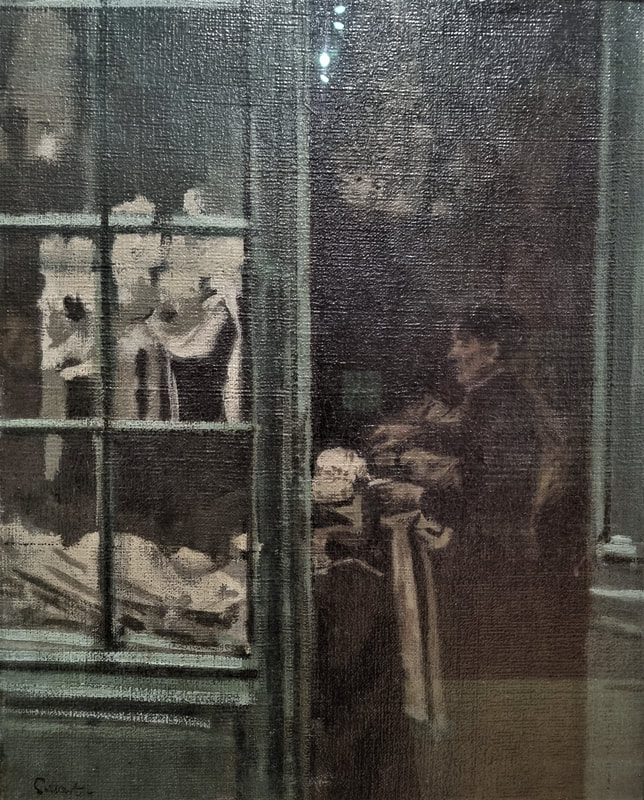|
#liverpool #waltersickert #WalkerArtGallery Walter Sickert is one of Britain’s most important artists, with a career spanning six decades. Born in Munich, Germany, he moved to Britain as a child in 1868. As a young artist, he worked as an apprentice to the American painter James Abbot McNeill Whistler (1834-1903) who, along with the French impressionist painter Edward Degas (1834-1917), greatly influenced Sickert’s early work. After negotiating the large roadworks, building work and Storm Barra, we arrived at the Walker Art Gallery, Liverpool to view the Sickert exhibition. After paying our entrance fee, we entered the gallery, and the first thing that struck us about his work was how dark the paintings were, even with his later works that were described as more colourful. Images from the following photographs don't always show this as the camera adjusts the images in modern phones. One of the first things that intrigued me was that he owed a great debt to James Whistler where he had been apprenticed. Then he was introduced to Degas where he then combined ideas from both these artists in his paintings before he found his own style in 1887 with his music hall paintings. This made me think who could I approach nowadays as a mentor. One artist I suppose is David Hockney as he has tried several styles that appeal to me, but after that I would struggle to think of anyone else. When I started painting in the 70's Lowry was still around and several of the artists I met had worked alongside him but nowadays these opportunities aren't the same. Having said that influences are all around us with the internet. and YouTube. Moving on around the exhibition, we followed his life as he moved to Paris, where he met Degas, then on to Venice, and later finishing in Dieppe. Paintings from all these towns were featured.  The next paintings were his most iconic and important artworks. These were described as "modern conversation pieces", where he reinvented the 18th century informal group portraits in domestic scenes, capturing the everyday drama of modern life. This I can relate to as recently I have been capturing scenes featuring local people coping with the pandemic. Unable to spend summer in Dieppe because of World War 1, he decided to explore Britain's holiday resorts and countryside. In this painting he captures the Pierrot show in Brighton, and this particular painting, due to its composition, is considered to be a masterpiece. An interesting theory and something worth debating. It certainly shows how important his mentors were. He also put this into practice helping other artists and working alongside them such as Sylvia Gosse. Her use of photographs as a source inspired Sickert to do the same. Nowadays however, this can be frowned upon, but these later works of Sickert were revisited and and then recognised as an important development of modern British Art. An enjoyable and enlightening visit and, all in all, worth the entrance fee, with his work exhibited in several galleries. To sum it up, a quote many artists can relate to.
3 Comments
|
AuthorPhilip Westcott Categories |







 RSS Feed
RSS Feed